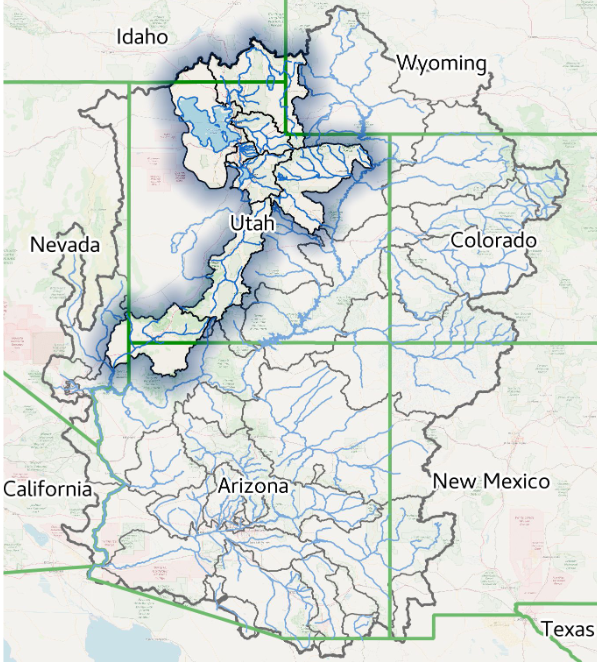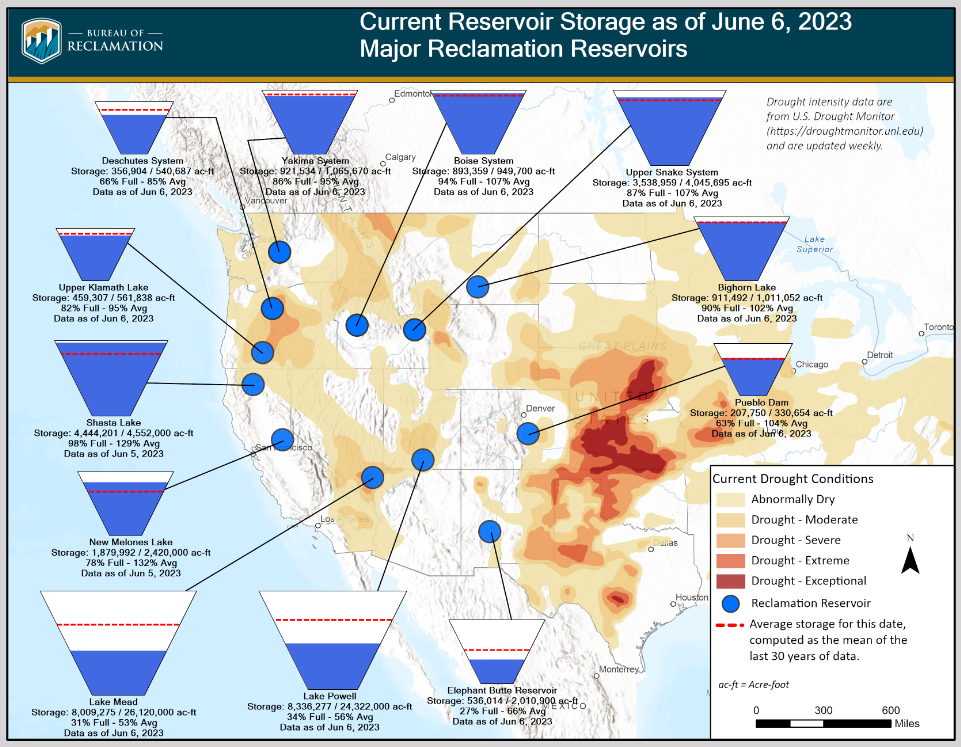The mission of the National Weather Service Colorado Basin River Forecast Center (CBRFC) is to produce river, flood and water supply forecasts for the Colorado Basin and the Great Basin in support of saving lives and property and to enhance the region’s environment and economy.
In this article, I am providing a summary of the situation as of June 1, 2023. The situation is very good but flood risk from the snow meltdown has increased in a few places.
I have also included information on the current reservoir storage levels including a few that are outside of the Colorado River Basin.
The image below shows part of the area covered in the CBRFC Report. The map shown here is only the Colorado Basin. The Eastern Great Basin is to the west of this map. The maps shown in the article cover both basins but are not as scenic as this map.
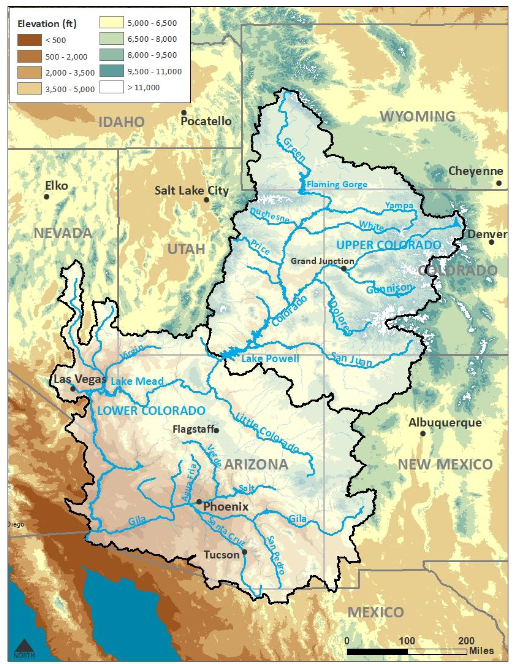
Map showing both the Colorado Basin and Eastern Great Basin.
| Most of the information presented in this part of the article is from a summary report (Link) issued by the Colorado River Basin Forecast Center. June 1, 2023, Water Supply Forecast Discussion The Colorado Basin River Forecast Center (CBRFC) geographic forecast area includes the Upper Colorado River Basin (UCRB), Lower Colorado River Basin (LCRB), and Eastern Great Basin (GB). It is one of many similar organizations within the National Weather Service. They are all different. In the future, I will try to pay more attention to some of the other River Forecasting Centers but they do not all go out of their way to provide reports to the Media. But the Colorado River is a special situation in a way due to the problems complying with the Colorado River Compact. But all our rivers are important. At this time of the year, when we are no longer adding to the snowmelt but are in the runoff phase, they do not have a webinar to present the information. Additional information is available on the Center website (click HERE), there are certain graphics that update daily. And now I provide the main part of their new forecast summary. I am copying directly from their document. My comments are in boxes. |
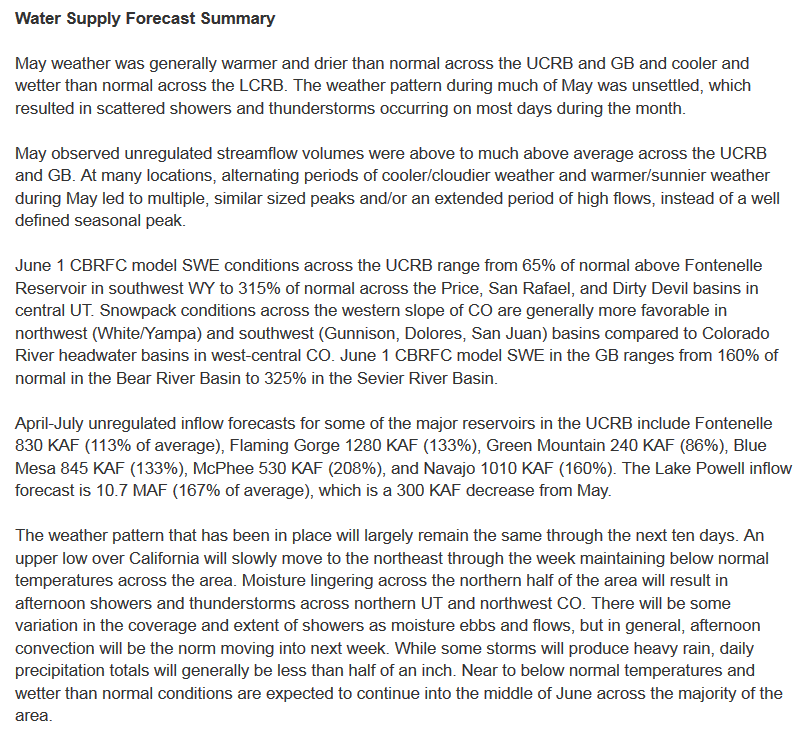
| The CBRFC weather forecast is cooler than usual and wetter than usual which is ideal for water supply without flooding. For updated weather forecasts go to econcurrents.com |
Seasonal Water Supply Forecasts
June 1 water supply forecast ranges (percent of normal) by basin
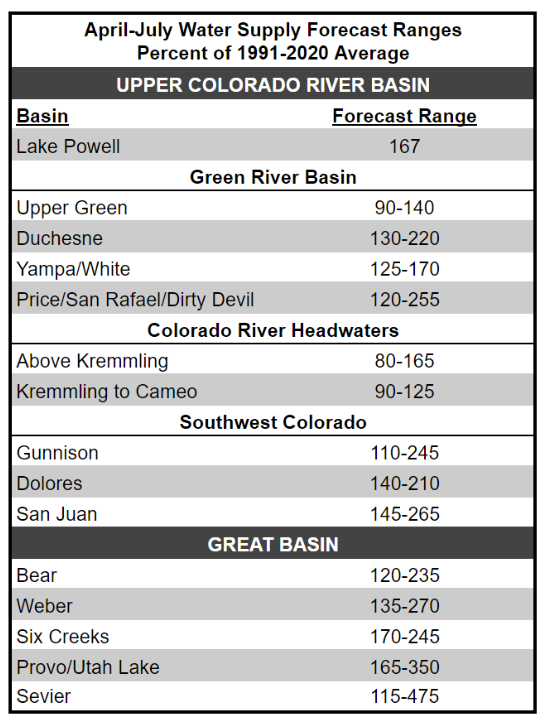
| This table of course is what we are mostly interested in. The range of estimates is the variation within the area, not the exceedance analysis. The map below shows this information by subbasin. Since this is a June 1 forecast, the range of estimates from the lowest likely(actually the 10% level) and the highest likely (the 90% level) is very small. Below where it says “specific water supply forecasts”, the link takes you to the exceedance forecasts – it took me a while to figure that out. |

| Almost all areas are forecasting more than 100% of Climatology defined as the 1991 – 2020 Average. |
For specific water supply forecasts click HERE

| I thought it would be interesting to look at the comparable forecast on May 1, 2023 which is shown above. In most cases the forecasts were slightly higher last month. |
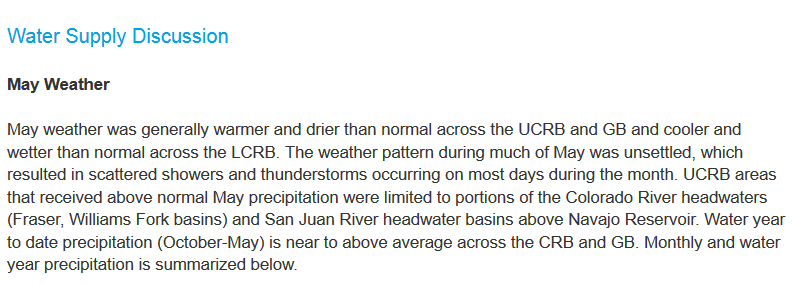
| Described above and shown below is the north-south divide. I believe the range in the numbers in this graphic is the variation in each basin. |
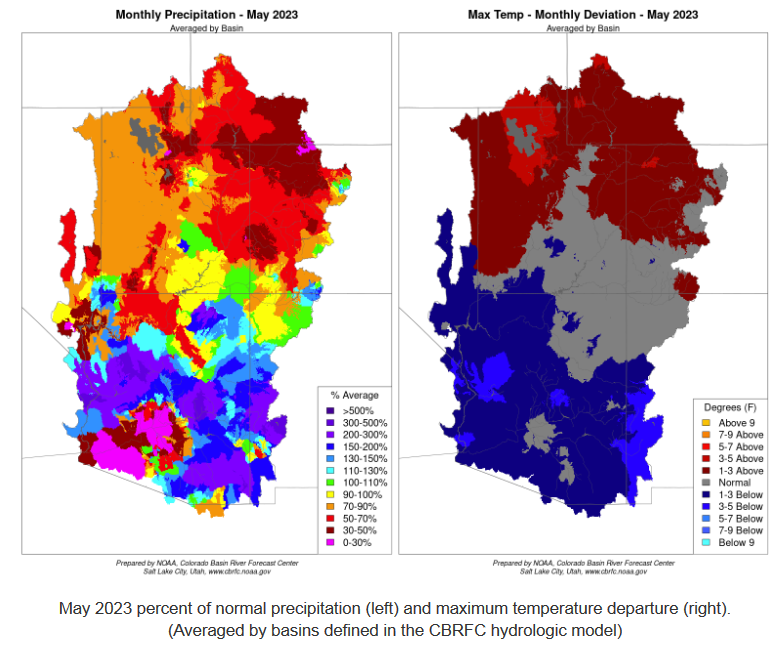
The precipitation maps for prior months can be viewed HERE
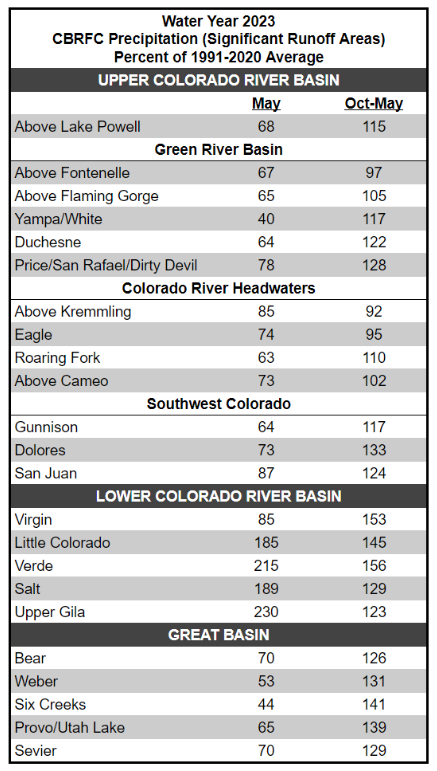
| In the above, we are looking at precipitation in table form. It shows both May and the water year (October through May). May precipitation was highly variable. It was described earlier but here we see it broken down by basins. May was wet only for the LCRB. |

| Now we are looking at the observed stream flow described above and below using a map. “Unregulated” means what the flows would have been if there were no actions by regulators to modify them. |
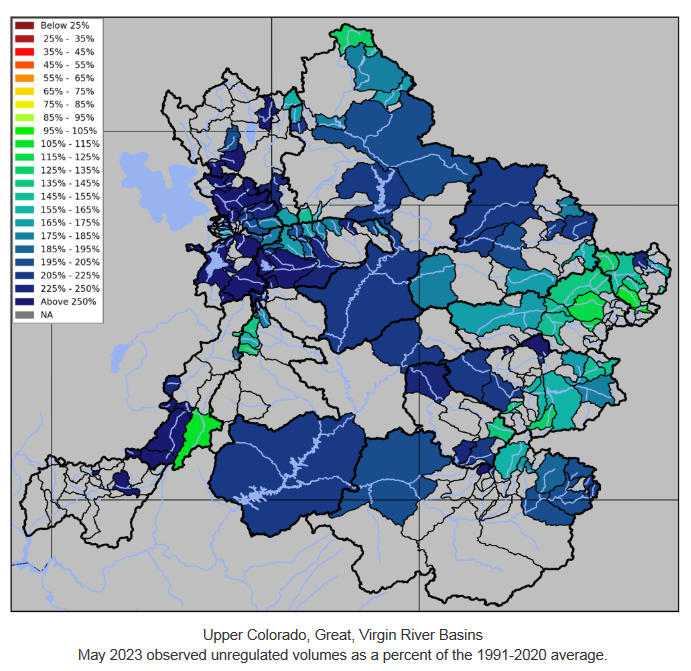

| Here we look at what is left to potentially melt and contribute to stream flow. Not all snow that remains will contribute to streamflow as some will be lost to evaporation or sublimation. |
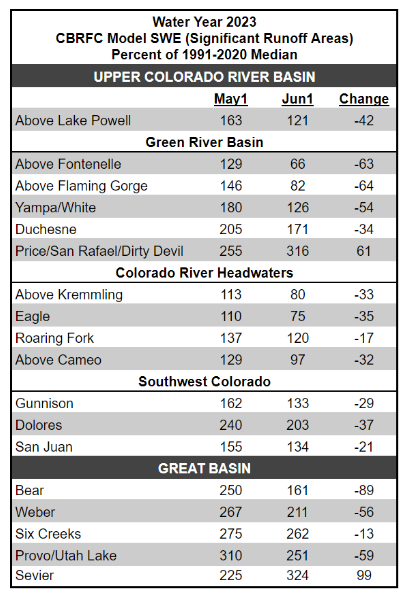
| By June 1, It is hard to tell if the amounts are significant are not. Normal for May 1 and June 1 are different so it is difficult to interpret what the change means. The actual value for June 1 is also difficult to interpret. That is why CRBFC uses a complex water model. |
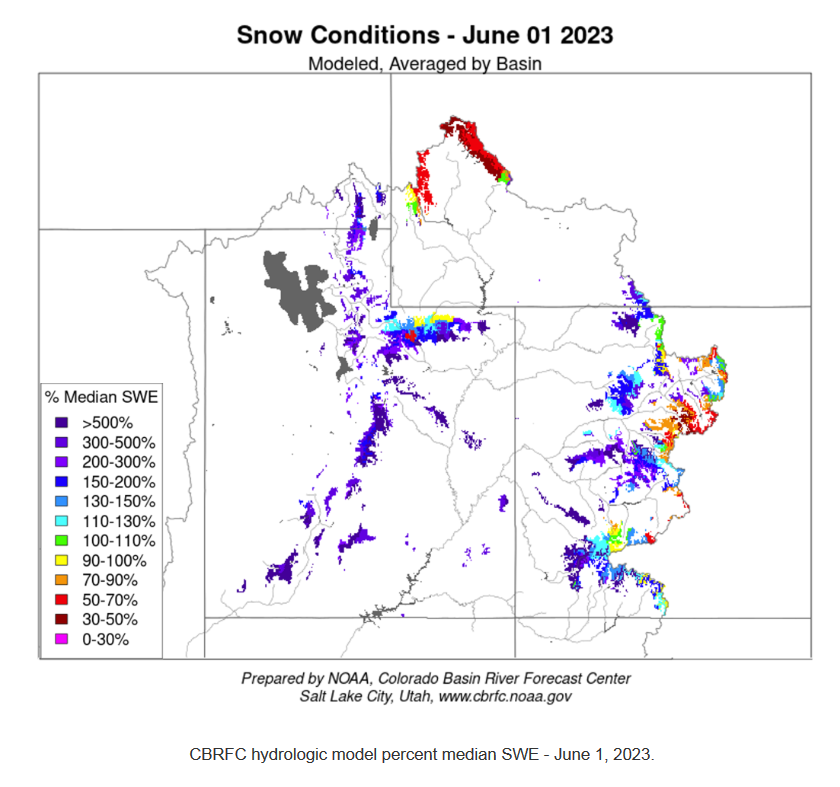
| The above may be easier to relate to. It shows what remains as snow on June 1 but again as a percent of normal not inches of contained water. I mention this to point out that figuring out where things stand is complex. |
For updated SNOTEL information click HERE
For CBRFC hydrologic model snow click HERE
For CBRFC’s beginning-of-the-month online publication that contains basin conditions, summary graphics,
and end-of-month reservoir content tables refer to the following links.
Basin Conditions and Summary Graphics
Green River Basin
Upper Colorado River Basin
San Juan River Basin
Great Salt Lake Basin
Sevier River Basin
Virgin River Basin
End Of Month Reservoir Content Tables
Green River Basin
Upper Colorado River Basin
San Juan River Basin
Great Salt Lake Basin
Sevier Basin
Explanation of Abbreviations
That completes what we are reporting for CBRFC. From a Different Source (USBR.gov) and Covering a Larger Area and with some more recent data:

Click HERE to update this image.
| Many reservoirs are back to their average. Others are still below average but much above the desperate levels of last year. It will take a run of wet years to get Lakes Powell and Mead back to normal. Those two reservoirs do not empty each year so they represent true storage. Elephant Butte may have once been a storage dam but with Climate Change and the Negative Phase of the PDO Cycle, it generally releases what it receives down to a safe storage level and other considerations. |
–
| I hope you found this article interesting and useful. |
–
